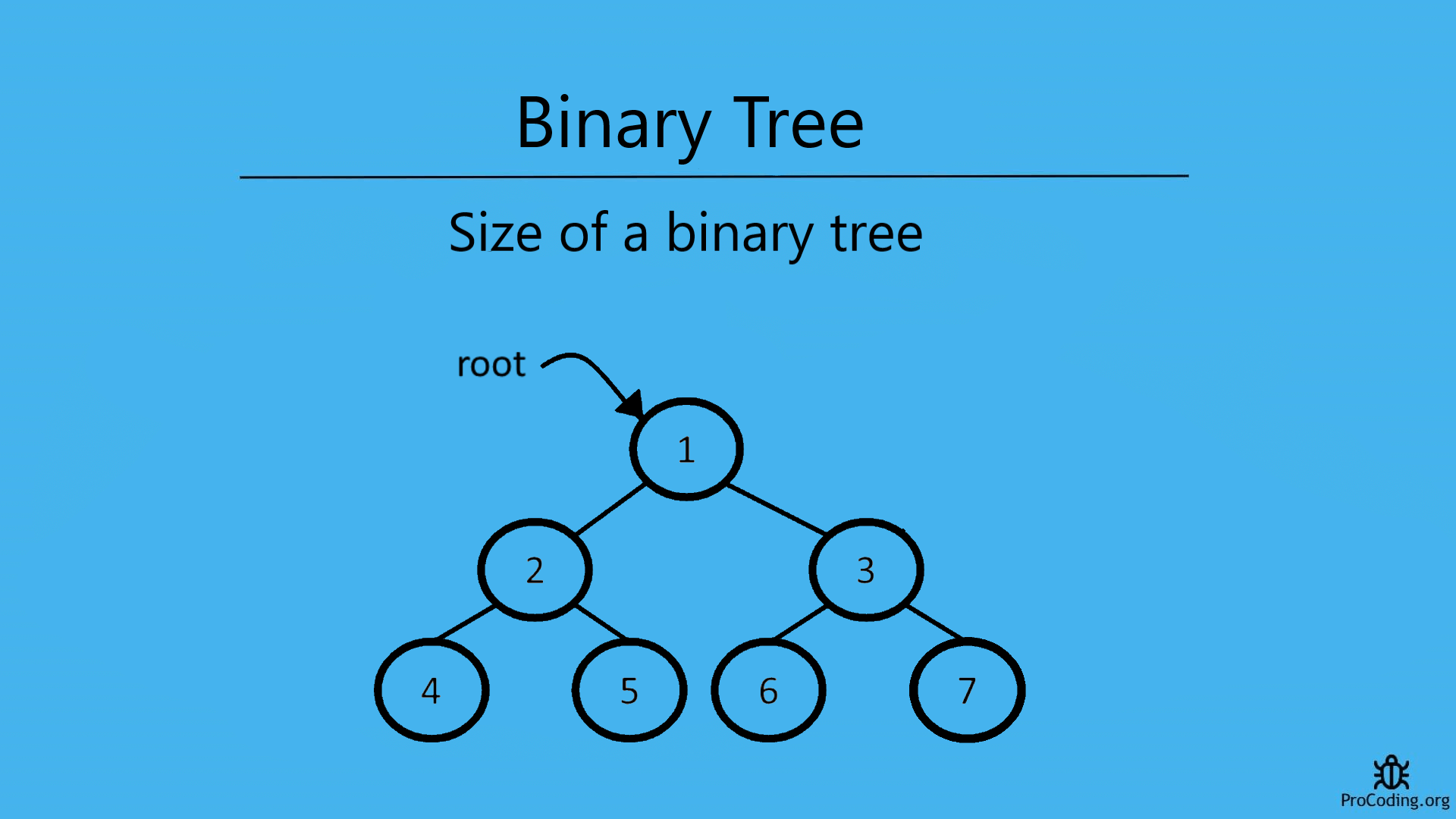Size of a binary tree
Find the size of a Binary tree using recursion or iterative solution. For example, a binary tree contains elements- 1, 2, 3, 4, 5, 6, 7 SIze of the binary tree will be 7.

To find the size of a binary tree we have to traverse each node one by one and count the nodes as long as we are getting nodes in the tree. Same logic can be applied to other trees like the Binary search tree.
We can solve this problem in two ways-
Recursive solution
For recursive solution we have to check each node one by one recursively as we have done in binary tree recursive traversal. Other types of traversal can also be used.
Python
class Node:
def __init__(self, data):
self.left = None
self.data = data
self.right = None
def find_size(root):
if root is None:
return 0
return find_size(root.left) + find_size(root.right) + 1
root = Node(1)
root.left = Node(2)
root.right = Node(3)
root.left.left = Node(4)
root.left.right = Node(5)
root.right.left = Node(6)
root.right.right = Node(7)
print(find_size(root))
JavaScript
class Node {
constructor(data) {
this.left = null;
this.data = data;
this.right = null;
}
}
function findSize(root) {
if (!root) return 0;
return findSize(root.left) + findSize(root.right) + 1;
}
const root = new Node(1);
root.left = new Node(2);
root.right = new Node(3);
root.left.left = new Node(4);
root.left.right = new Node(5);
root.right.left = new Node(6);
root.right.right = new Node(7);
console.log(findSize(root));
Output
7
Iterative solution
For iterative solution, we have to traverse each node in level order and count each node one by one.
Python
import queue
class Node:
def __init__(self, data):
self.left = None
self.data = data
self.right = None
def find_size(root):
if root is None:
return 0
q = queue.Queue()
q.put(root)
count = 0
while not q.empty():
count = count + 1
node = q.get()
if node.left:
q.put(node.left)
if node.right:
q.put(node.right)
return count
root = Node(1)
root.left = Node(2)
root.right = Node(3)
root.left.left = Node(4)
root.left.right = Node(5)
root.right.left = Node(6)
root.right.right = Node(7)
print(find_size(root))
JavaScript
class Node {
constructor(data) {
this.left = null;
this.data = data;
this.right = null;
}
}
function findSize(root) {
if (!root) return 0;
const q = [];
q.push(root);
count = 0;
while (q.length > 0) {
count = count + 1;
let node = q.shift();
if (node.left) {
q.push(node.left);
}
if (node.right) {
q.push(node.right);
}
}
return count;
}
const root = new Node(1);
root.left = new Node(2);
root.right = new Node(3);
root.left.left = new Node(4);
root.left.right = new Node(5);
root.right.left = new Node(6);
root.right.right = new Node(7);
console.log(findSize(root));
Output
7
Time complexity: The time complexity of both of these solution will be O(n) because we are just traversing each element of node one by one.